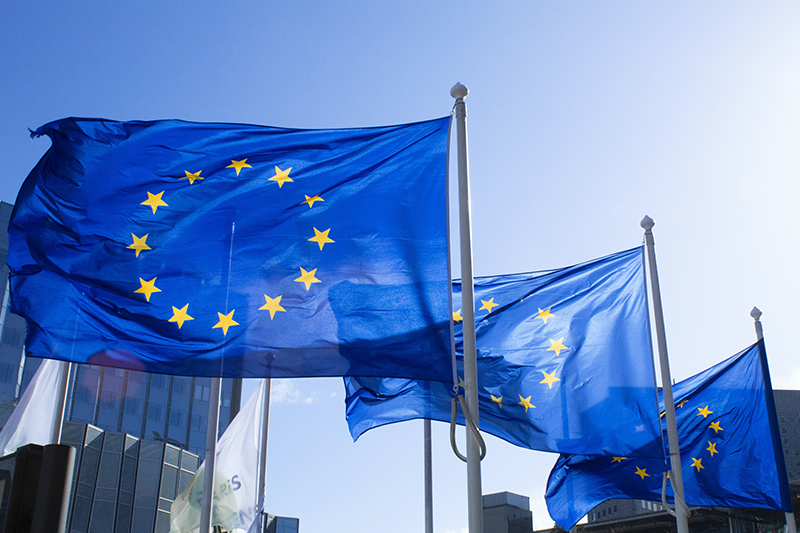An inside look: how regions participate in the life of the EU

In mid-June, we had a chance to speak with Mr. Klaus Hullmann from the European Committee of the Regions. This conversation took place in the framework of our seminar on the influence of regions in the EU with Dr. Markus Gastinger. Mr. Hullmann told us about why the voice of the regions is acquiring a new meaning and how the Committee of the Regions contributes to this development.
The European Committee of the Regions is the voice of the regions and their citizens in the European Union. It represents local and regional authorities and advises the EU on new laws that
impact regions.
Why has the European Committee of the Regions been created with the Maastricht Treaty in the early 1990s?
There are 329 politicians from the local and regional level who need a voice in Brussels. That is necessary because more than 70% of European law has an impact on the local and regional level. In many areas – such as environmental law, culture, or transport – the local and regional level is directly affected.
Moreover, the Committee of the Regions encouraged a culture of “subsidiarity”, which basically means that decisions should be taken at the lowest level possible. The Committee of the Regions wants that EU citizens have their say and influence EU decisions.
Finally, apart from legislation and subsidiarity, the Committee provides a meeting place, shares best practices, and facilitates a dialogue with EU institutions. So, for all the big subjects like for instance the Green Deal, we invite the plenary and the respective commissioners to have a dialogue about how the local and regional level is affected.

How is the Committee of the Regions involved when laws are made in the EU?
Today the most common process by which EU laws are adopted is the so-called “ordinary” procedure. It starts with the European Commission, which has the exclusive right to table proposals to the European Parliament and Council of the European Union.
The EP can take its decisions in two readings and, if it does not succeed to come to an agreement with European ministers in the Council, can enter a conciliation process.
But the ordinary procedure can also involve the EU’s two consultative bodies: the European Economic and Social Committee (EESC) and the European Committee of the Regions. So what is the difference? The EESC includes members of civil society – such as trade unions or employers’ organizations – while the Committee of the Regions has local and regional actors, such as mayors or city councilors. In contrast to other organizations representing local or regional interests, the Committee of the Regions is hardwired into the legislative process of the EU and has a legal right to be heard.
The Lisbon Treaty defines areas of legislation where consultation of the EESC and Committee of the Regions is mandatory. If the European Committee of the Regions does not get the right to be heard it can go to the European Court of Justice to claim its right.
How effective is the Committee of the Regions?
The first years after its creation, it was difficult to have an impact because the Committee of the Regions tried to be present everywhere – and if you want to be present everywhere, you are present nowhere. You can imagine if you try to work out an opinion about each subject, you don’t have enough time to do it correctly. That’s why the Committee has changed its strategy:
We said let’s do less, but let’s do it better! So, instead of a large number of opinions, we only make something like 60 a year now. We contact the Commission but also the EP and we have a dialogue with the persons making the decisions. For example, for the Green Deal we have created a task force of our members that is working closely together with the Members of European Parliament. I can tell you, it makes a big difference if you just receive a letter or if you have the representatives of the European Committee of the Regions sitting in front of you in the EP. Hence, we also try to become more “personal” in our approach.
There is a second element why people listen to us and why our advice is important. We are playing an important role on a local and regional level for certain subjects. Take the strategy “From Farm to Fork”, for example, which has been suggested by Commission last year. The purpose is to reduce the distance from production to consumers so that we do not have cucumbers that travel across the entire EU. We want to move the production closer to citizens – and local and regional actors in the EU simply know a lot about strategies to best achieve this goal!
We asked the European Commission to monitor the progress in this strategy. This makes sense because the purchasing power of local and regional authorities in this sector is about 14 % of the EU GDP. Therefore, EU decision-makers need the expertise of local and regional actors to come to good decisions – and the Committee of the Regions helps facilitate that knowledge transfer.
We want to thank Mr. Hullmann for his presentation, which was very interesting. With his sense of humor Mr. Hullmann also lightened up otherwise “dry” subjects and helped us understand what the European Committee of the Regions does.
Ibrahim Salihi & Vladyslav Merezhko
Photo Credits:
Title photo: Alexandre Lallemand via Unsplash
Screenshot: seminar




